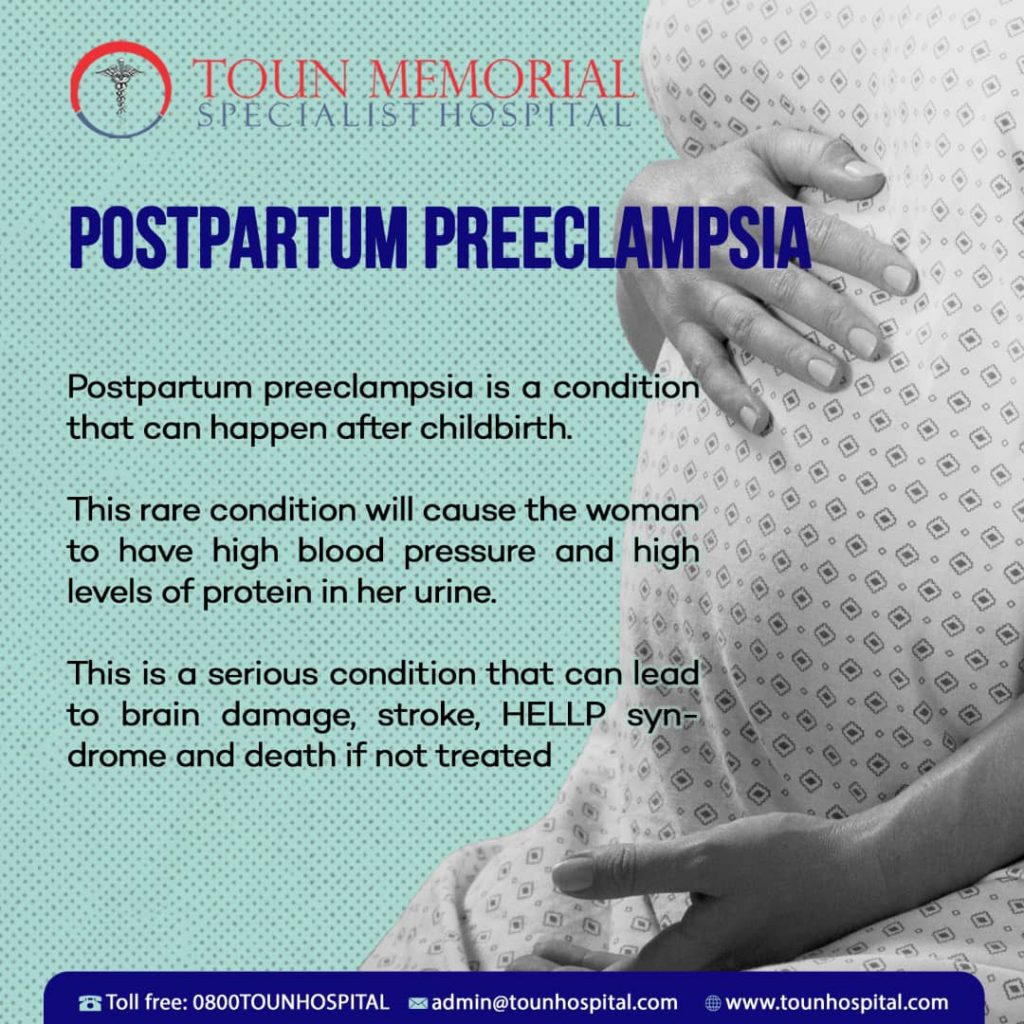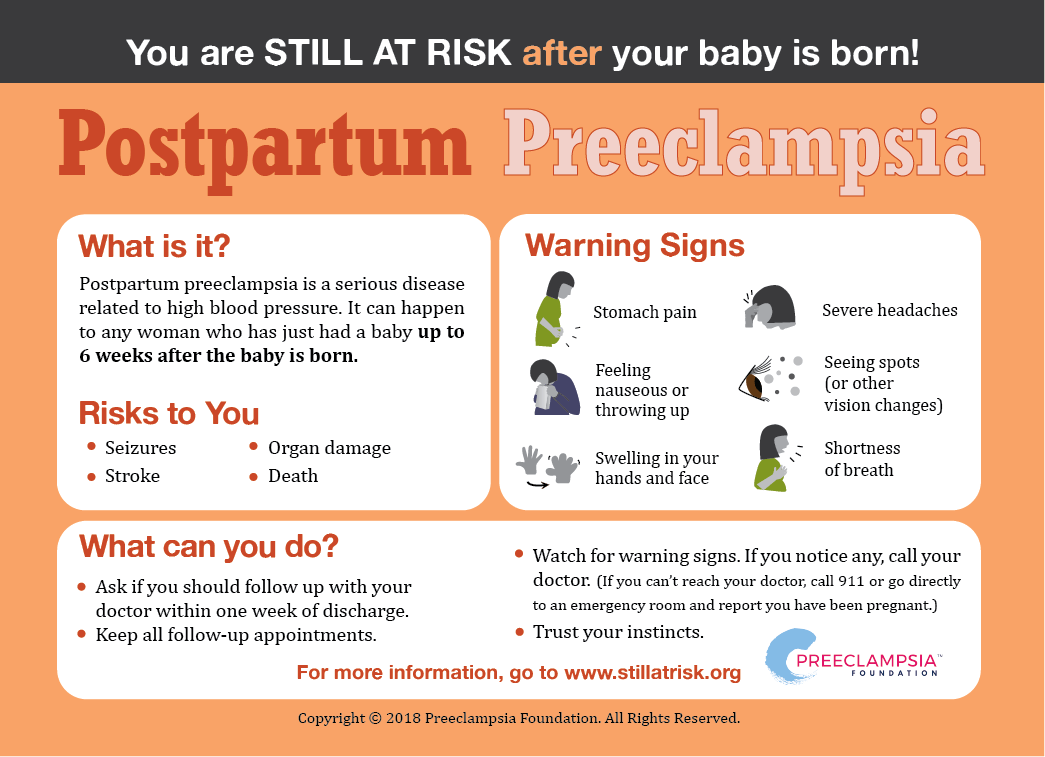Postpartum preeclampsia is a condition that can sneak up on new moms, and it's something we need to talk about. Imagine this: you've just welcomed a beautiful new baby into the world, and you're basking in all the joy and chaos that comes with motherhood. But then, out of nowhere, your body starts sending signals that something’s not quite right. This is where postpartum preeclampsia comes into play, and it’s no joke. It’s a serious condition that can affect women even after they’ve given birth, and it’s crucial to understand its signs, symptoms, and how to manage it.
Now, you might be thinking, "I thought preeclampsia only happened during pregnancy." And yeah, that’s true for the most part, but postpartum preeclampsia is a bit of a wildcard. It can occur within the first six weeks after delivery, and it’s just as dangerous as its pregnancy counterpart. So, if you’re a new mom or know someone who is, this is a topic worth diving into.
Here’s the deal: postpartum preeclampsia doesn’t get as much attention as it should. People are so focused on the baby blues or postpartum depression that they overlook this silent but serious condition. But don’t worry, we’re here to break it down for you, so you can be informed and prepared. Let’s dive in!
Read also:Berchtold The Man Who Shaped History You Probably Didnrsquot Know About
What Exactly is Postpartum Preeclampsia?
Let’s start with the basics. Postpartum preeclampsia is essentially high blood pressure that develops after childbirth. It’s like your body is saying, "Hey, I’m still recovering here!" and it shows up in the form of elevated blood pressure and other symptoms. This condition can occur up to six weeks after delivery, and it’s not something to ignore.
Here’s the kicker: postpartum preeclampsia is often mistaken for normal postpartum recovery symptoms. You know, like swelling or headaches. But when these symptoms persist or worsen, it’s time to pay attention. It’s not just about feeling a little off; it’s about recognizing the signs that your body might be sending you.
Understanding the Symptoms
Okay, so what are the red flags you need to watch out for? Here’s a quick rundown:
- Severe headaches that don’t go away with over-the-counter meds
- Blurred vision or sensitivity to light
- Swelling in your face, hands, or feet
- Upper abdominal pain, especially under the ribs
- Nausea or vomiting
- Sudden weight gain
These symptoms might sound familiar, but when they show up together or get worse, it’s a sign that something’s up. And trust me, you don’t want to brush this off as just postpartum fatigue.
Who’s at Risk?
Now, let’s talk about who’s more likely to experience postpartum preeclampsia. While it can happen to anyone, some women are at higher risk. Factors like first-time pregnancy, obesity, chronic hypertension, or a history of preeclampsia during pregnancy can increase the chances. So, if any of these apply to you, it’s extra important to stay vigilant.
But here’s the thing: even if you’re not in one of these high-risk groups, it doesn’t mean you’re off the hook. Postpartum preeclampsia doesn’t discriminate, so it’s crucial for all new moms to be aware of the signs.
Read also:Eminem Family A Deep Dive Into The Music Legends Personal Life And Inner Circle
Can It Happen to Women Who Had a Healthy Pregnancy?
Absolutely. Postpartum preeclampsia can occur even if you had a perfectly healthy pregnancy. It’s like your body is playing a trick on you, and it’s not fair. That’s why education and awareness are key. You can’t rely solely on your pregnancy experience to predict what might happen after delivery.
How is Postpartum Preeclampsia Diagnosed?
Diagnosing postpartum preeclampsia involves a combination of tests and observations. Your doctor will likely check your blood pressure, urine protein levels, and sometimes even order blood tests. If your blood pressure is consistently high and there’s protein in your urine, that’s a strong indicator of postpartum preeclampsia.
And here’s the important part: don’t wait for your six-week checkup to bring this up. If you’re experiencing symptoms, contact your healthcare provider immediately. Early diagnosis and treatment are key to preventing complications.
Treatment Options
So, what happens if you’re diagnosed with postpartum preeclampsia? The good news is that it’s treatable. Your doctor might prescribe medication to lower your blood pressure or prevent seizures. In some cases, you might need to be hospitalized for closer monitoring.
And let’s not forget about lifestyle changes. Staying hydrated, getting enough rest, and eating a balanced diet can all help manage symptoms. It’s not just about popping pills; it’s about taking care of your body during this crucial recovery period.
Can It Be Prevented?
Prevention is tricky because we don’t always know what triggers postpartum preeclampsia. However, regular prenatal care and monitoring your blood pressure during pregnancy can help reduce the risk. And after delivery, staying in touch with your healthcare provider and reporting any unusual symptoms can make a big difference.
Complications to Watch Out For
Postpartum preeclampsia isn’t something to mess around with. If left untreated, it can lead to serious complications like eclampsia, which involves seizures, or even organ damage. Scary stuff, right? That’s why early detection and treatment are so important.
And let’s not forget about the emotional toll this condition can take. Dealing with postpartum preeclampsia on top of adjusting to motherhood can be overwhelming. It’s okay to seek support from friends, family, or even a therapist. You’re not alone in this, and asking for help is a sign of strength, not weakness.
What About Long-Term Effects?
For most women, postpartum preeclampsia resolves with proper treatment. However, some may experience long-term effects like an increased risk of hypertension or cardiovascular disease later in life. Regular follow-up with your healthcare provider is essential to monitor your health and address any concerns.
Real-Life Stories: Women Who Battled Postpartum Preeclampsia
Let’s hear from some women who’ve been through this. Sarah, a first-time mom, recalls her experience: "I thought I was just tired from taking care of the baby, but when my headaches got worse and my vision started to blur, I knew something was off. Thankfully, I sought help, and my doctor caught it early."
Then there’s Emily, who had a more severe case: "I ended up in the hospital a week after delivery. It was scary, but the medical team was amazing. They got my blood pressure under control and made sure I was okay before sending me home."
These stories highlight the importance of listening to your body and seeking help when needed. You never know how serious things can get if you ignore the signs.
How to Support a Loved One With Postpartum Preeclampsia
If someone you know is dealing with postpartum preeclampsia, there are ways you can support them. Offer to help with household chores, take care of the baby for a bit, or simply be there to listen. Sometimes, just knowing someone has their back can make a world of difference.
Encourage them to follow their treatment plan and attend all their doctor’s appointments. And if they’re feeling overwhelmed, remind them that it’s okay to ask for help. You don’t have to be a medical expert to be a great support system.
Resources and Support Groups
There are plenty of resources available for women dealing with postpartum preeclampsia. Organizations like the Preeclampsia Foundation offer information, support, and even online communities where you can connect with others going through the same thing.
And let’s not forget about local support groups. Sometimes, talking to someone in person can be more comforting than reading articles online. Check with your healthcare provider or local hospitals to see what’s available in your area.
Where to Find Reliable Information
When it comes to health information, it’s important to stick to trusted sources. Websites like the Mayo Clinic, NHS, and the American College of Obstetricians and Gynecologists are great places to start. They offer evidence-based information that you can rely on.
Final Thoughts
Postpartum preeclampsia is a serious condition that deserves more attention. By understanding its signs, symptoms, and risk factors, you can better protect yourself or a loved one. Remember, early detection and treatment are key to preventing complications.
So, if you’re a new mom or know someone who is, don’t hesitate to speak up if something feels off. Your health is just as important as your baby’s, and taking care of yourself is the best way to ensure a happy and healthy future for both of you.
And hey, if you found this article helpful, feel free to share it with others. The more awareness we can spread, the better. Let’s make postpartum preeclampsia a topic that’s talked about openly and understood by all.
Table of Contents
- What Exactly is Postpartum Preeclampsia?
- Understanding the Symptoms
- Who’s at Risk?
- How is Postpartum Preeclampsia Diagnosed?
- Treatment Options
- Complications to Watch Out For
- Real-Life Stories: Women Who Battled Postpartum Preeclampsia
- How to Support a Loved One With Postpartum Preeclampsia
- Resources and Support Groups
- Final Thoughts


